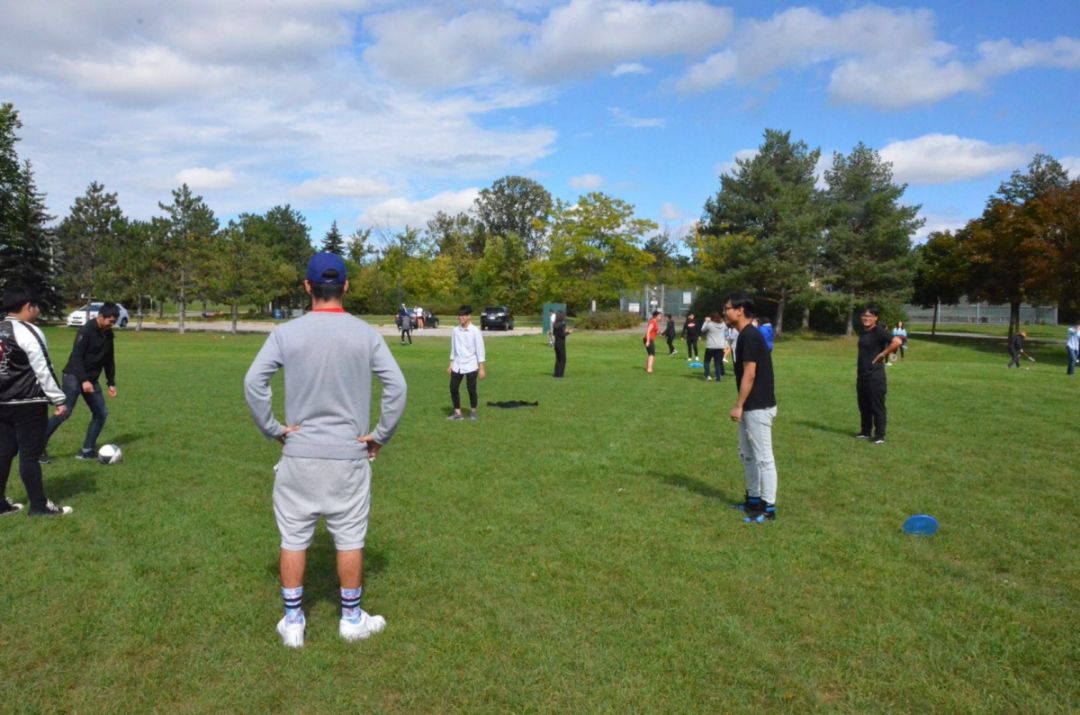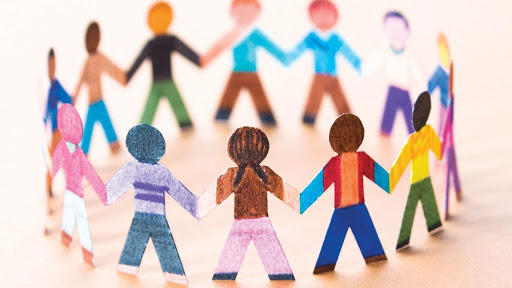One of the biggest questions parents have who are planning to send their children to Canadian high schools is whether it is better to go to a public high school or a private school. Most parents choose to enroll their children in private high schools after consulting agents for public and private schools. What helps parents make this choice?
- Social Responsibility
Private schools have a different social responsibility than public schools, so they have more autonomy in terms of teaching purpose, curriculum, and enrollment, etc.
Public schools are to serve the surrounding community as compulsory education and enable students to complete high school, rather than aiming to develop students into social elites.

Instead of gathering resources for the social responsibility of compulsory education, private schools can select students who have a good foundation with the school through interviews and academic performance requirements. For example, private schools will offer ESL and other supplementary courses, as well as more second and third language options, AP courses, and so on, to cultivate world-class talents.
- Stability
Private schools are less subject to social policy interference. Many public-school districts are experiencing a shortage of schools due to population growth. The Department of Education must give priority to building new public schools and increasing classrooms and teachers to meet the demand. The government can only invest a certain percentage. When the investment in expansion takes most of the funds, it will certainly mean a reduction in public school spending, and it is not difficult to understand that the fact that the teaching performance of public schools in many regions has been “down” for several years.
Private school admissions are dependent on reputation. Each famous alumni, each student enrolled by famous universities, will bring glory and feedback to their high school, and be part of their heritage.
- The Strength of the Teachers
The national government funds public high schools. Recently, the Ontario Public Education Agency has been organizing several strikes by teachers in Ontario’s public schools, from elementary to high school, due to government reduction in education funding. The occurrence of this situation has a negative impact on students’ life and learning; the knowledge they learn is disconnected and affects their motivation to learn.
In Canada, a teacher entering a public high school is so they can get a stable job. The pay and benefits are quite substantial, but because of the stability of this type of work, it tires a teacher’s passion for teaching. Whether teachers are teaching well or not, does not directly affect their salary. A teacher with good work ethics and a love of the education profession can handle students in their study, but not every student is lucky enough to have such a teacher.

Private high schools employ teachers on a contractual basis, and they only allow the best teachers to renew their contracts, while they dismiss teachers who do not meet the standards of competence. To continue to be a teacher and work, teachers are constantly improving. So, this type of teaching method is rigorous.
Students need to have strong self-discipline in Canadian high schools, and some international students often lose their direction and do not study on their own once they are not supervised by teachers and parents. So when choosing a school, it’s right to choose a private school that is more caring and responsible for its students.
- Education Quality
Public high schools in Canada are free of charge for local students, and it’s compulsory education, while private high schools are elite education.
The public high school was set up for the children of the nearby community to complete their education and develop their general qualities so that they can find employment and adapt to society as soon as possible after graduation. Public high schools are mostly the choice of the local working class and even unemployed parents.

Private high schools are established for the development of elite talents, with better quality education and stronger faculty to develop each child’s unique potential. Private high schools are the choice for middle and high-income families. Private schools have an even lower student-teacher ratio, with Huron International School achieving a 1:8 student-teacher ratio, meaning teachers are more focused on educating each student. And Huron International School offers free after-school tutoring, pre-test tutoring and ESL training programs to help students improve in all areas.
- The University Enrollment Rate
Many countries, especially in Asia, have high schools with a strong focus on “getting into a university” and getting into a prestigious university is crucial for the students themselves and even for their families.
However! It’s a different story in Canada. Local Canadian public schools don’t focus on getting students into university because their goal is to foster qualified Canadian citizens and show children how society works. So public high schools in Canada are not set up for advancement.
Students who attend a public high school in Canada may choose to go to a university after graduation, or they may choose to find a job. As a result, a lower percentage of public high school students enter university, and an even lower percentage of international students want to enter university through public high schools.

The basic enrollment rates in Canada’s private high schools are 80%-90%+, and some are even 100%. In addition, some teachers help choose the high school courses and help each child analyze and choose the university and department that suits them according to their different academic performance, personality traits, interests, etc.
In public schools, even if you can apply to universities with your grades, public school teachers cannot provide more help because there are too many students and only a few counselors.
- The Accommodation and Canteen
Public schools do not provide accommodations, and students can only look for homestays outside the school. In recent years, conflicts between homestays and international students have been increasingly exposed. Homestays are set up to earn money and are reluctant to provide students with services other than food and lodging, while students need safety and security and have requirements such as a balanced diet. So, there is an unequal or even contradictory, service and requirement between homestays and international students.
Most private schools offer students’ apartments and three meals with nutritionally balanced, East-West combination to suit the tastes of students from all over the world. They provide the nutritional elements required by the student’s body, which provides a comfortable and safe environment that ensures students are fully engaged in their studies.
- Comprehensive Quality
We often see foreign students with many specialties who know many musical instruments and are involved in many sports. But domestic students exhaust their time and energy by studying. So how do foreign schools arrange the time?
In both public and private high schools, school is mostly dismissed around 3 p.m. (sometimes it may be earlier or later). They also have many interest groups and organize many activities, but after dismissed in public schools, students have limited access to those activities, and without dedicated teachers to guide and lead them, they go out on their own to participate in interest activities.

A private school has set times for activities after school. The school has a variety of fitness, musical instruments, and sports venues, which covers most of the children’s interests, and in the school, it is not only for students to be physically strong, but also to develop interests, and are led by a professional.
- International Student Services
Public schools do not consider the low English proficiency level of international students and do not have professional ESL teachers in their teaching staff; most public schools will hire part-time teachers to teach ESL.
Public schools do not consider the fact that international students are not familiar with the course selection system. Public schools prefer local students to choose their courses, and no one takes the initiative to guide international students on how to choose their courses. At the same time, public schools will not offer a flexible semester system for international students. In many public schools, they don’t encourage students to attend a prestigious university and encourage them to take religious and manual classes in the 12th grade.

Public schools don’t have special tutoring for international students, and there is only one tutor for over a hundred students. Also, there are no head teachers who take care of the students.
So many international students don’t fit into Canadian high schools. After the start of public school, there is no special care for international students, and students don’t know how to schedule their time after school. They must reach out to teachers or administrators to communicate certain problems. It is difficult to make friends because of language problems, and it is like being trapped on an island with no one who cares.
These are all things that can be avoided by studying in private schools, which are full of international students from all over the world, who can quickly make new friends and integrate into their new environment with the help of each other. Many private schools have a system of evening study, where students work together to create a strong learning atmosphere and work toward the same goal. The student’s head teacher keeps an eye on the student and can also answer questions if the student has any problems.
- Home-School Connections
Public schools have a teacher-to-student ratio of about 100:1, and teachers don’t have enough time and energy to take care of every student, let alone international students. And public-school teachers work 8 hours a day and cannot take responsibility for their students after work, so it’s hard for them to notice problems with their students.
Even if the teacher knows information about the students, the parents’ English is not good enough to discuss with the teachers. Small problems with children are hard to detect and discover, and when it comes to asking parents to catch a flight to Canada, small problems will become big problems.
In private schools, where the teacher-student ratio is 8:1, the teacher can take care of each student, and the school also has a head teacher to keep track of the student’s life. They can establish contact with parents and communicate with them about their child in a timely manner. Parents don’t need to cross the ocean to know what’s going on with their children, and private schools do put parents at ease.
- Students Growth Experience
Public schools are limited to teach because of the school environment, teacher resources, and school funding. The school is focused on completing the tasks required by the educational curriculum; the child’s contact with the teacher is limited due to the limited time available at the school, and the teacher does not have the energy to focus on the needs of each student.
Anna, an international student, said that school was dismissed at 3:00 p.m., and the students were being told to go home as soon as the school was dismissed, and they were not allowed to stay in the school.
Private schools are more focused on making students feel comfortable in a community atmosphere at school, helping them in all aspects of their development. When a child has academic problems, the school has a personalized tutoring and learning center; when a child is confused about growing up and school life, a bilingual teacher or a residential teacher can be there to answer questions; when a child needs to share after-school fun with their friends, the private school can provide dozens of student activities clubs, and the child would meet a lot of good friends while practicing various skills.

The 10 aspects that make up the difference between public and private schools are social responsibility, stability, the strength of teachers, education quality, the university enrollment rate progression rate, accommodation and canteen, comprehensive quality, international student services, home-school connections, and student growth experience. I believe parents understand why private high schools are better suited for international students.
In conclusion, public schools may be suitable for local students, but they are not suitable for international students!

